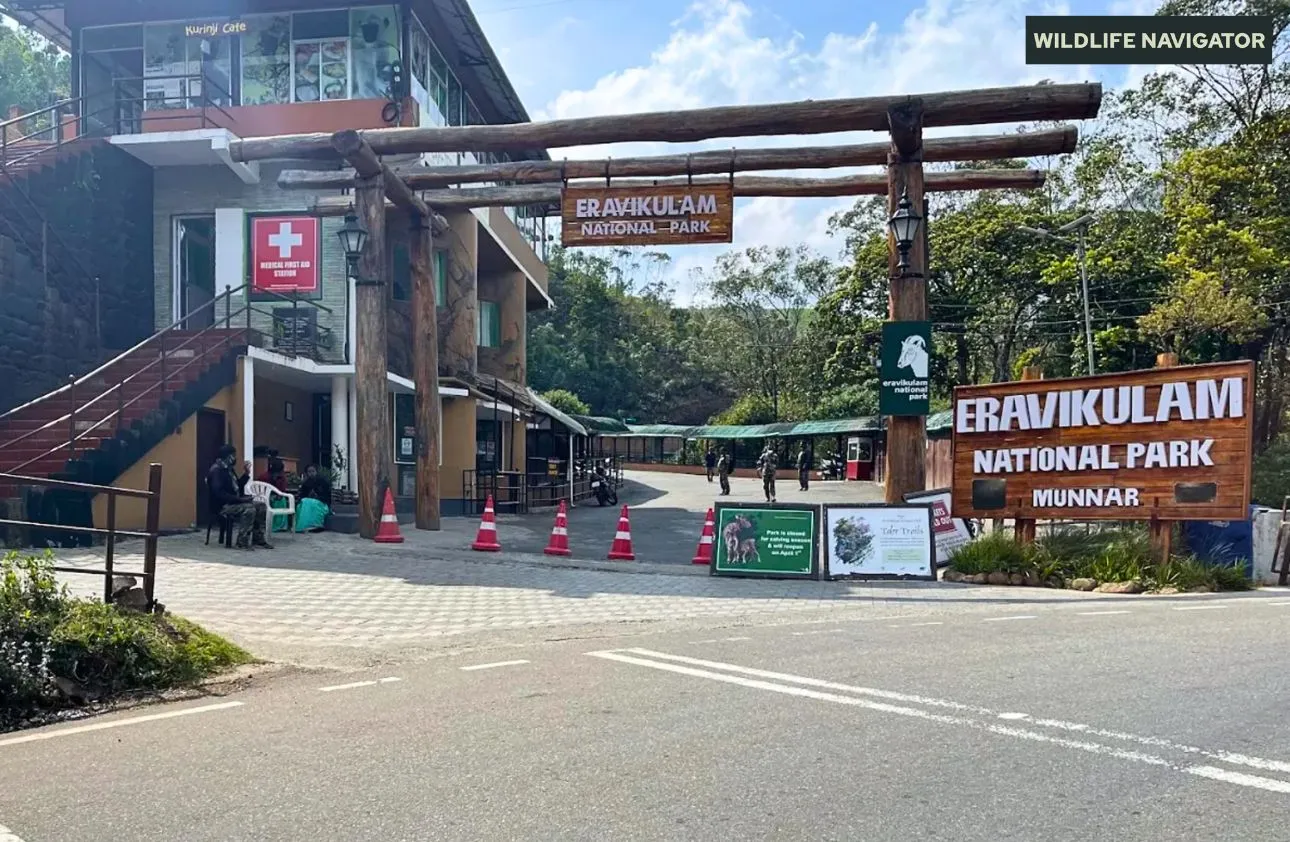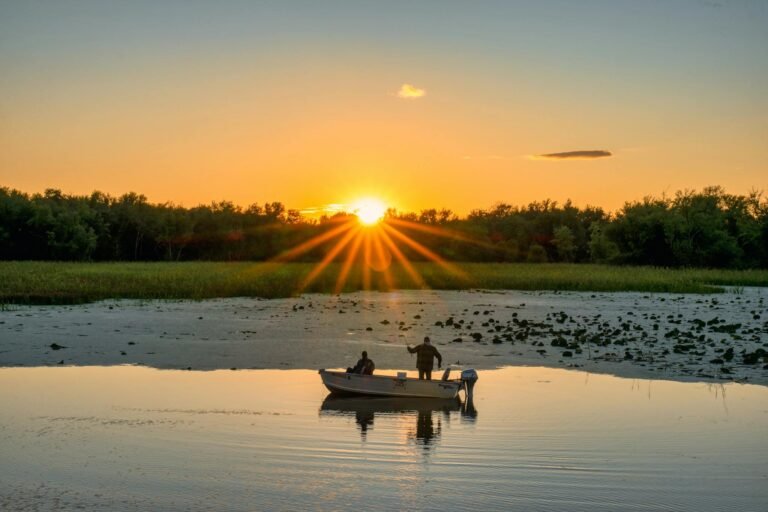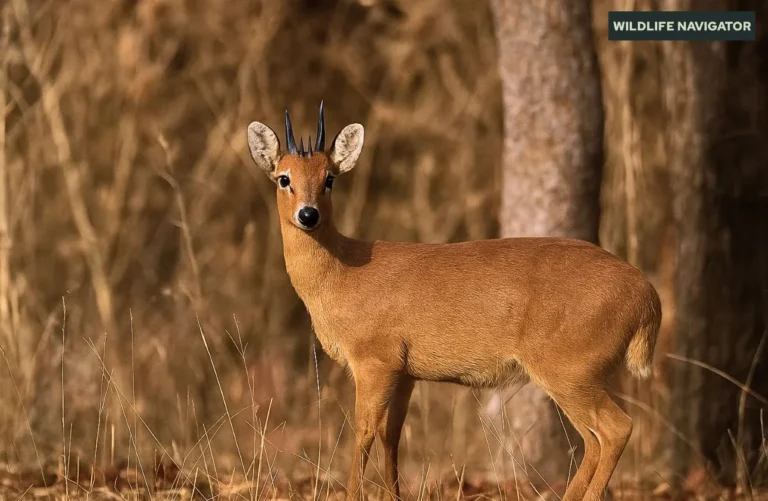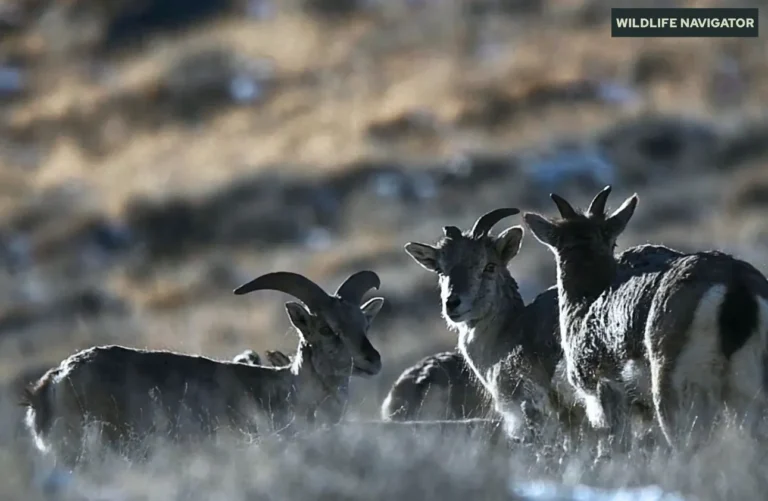Eravikulam National Park – Munnar, Kerala

Eravikulam National Park is one of India’s most celebrated high–altitude wildlife destinations, located in the mist–covered Western Ghats of Kerala near Munnar. Famous for its rolling grasslands, shola forests, and breathtaking mountain vistas, it offers a rare window into one of the most fragile and biodiverse ecosystems in South India.
Originally set aside to protect the endangered Nilgiri Tahr, the park is now globally recognised for its conservation significance and is part of the UNESCO–listed Western Ghats World Heritage Sites. Eravikulam is equally renowned for the spectacular Neelakurinji flowering event, when hillsides turn a striking shade of blue once every 12 years — a natural wonder that draws global attention.
With its unique wildlife, cool alpine climate, and ethereal landscapes, Eravikulam National Park stands as a sanctuary for nature lovers, trekkers, photographers, and wildlife enthusiasts seeking to experience the Western Ghats at their most pristine.
Location & Geography
Eravikulam National Park lies in the Idukki district of Kerala, close to the popular hill station of Munnar. Spread across the high–elevation plateaus of the Western Ghats, the park sits at altitudes ranging from about 1,600 to 2,695 meters, with Anamudi — the highest peak in South India — rising majestically within its boundaries.
The terrain consists of expansive rolling grasslands interspersed with shola forest patches, rocky cliffs, and cascading streams. This mosaic of mountain habitats creates ideal conditions for endemic flora and fauna adapted to cool, moist, high–altitude environments.
The region experiences a cool, temperate climate throughout the year, with mist and light rain frequent due to monsoon influence. The best time to visit is typically between September and February, when visibility is clearer and temperatures are pleasant.
History & Establishment
Before becoming a protected area, Eravikulam’s highlands were part of a private hunting reserve during the British era and later managed by the Kannan Devan Hill Produce (KDHP) Company, which oversaw Munnar’s tea plantations. Trophy hunting and habitat disturbance gradually threatened the Nilgiri Tahr population, prompting conservationists to advocate for protection.
Scientific interest in the region increased during the mid-20th century as researchers documented its unique grassland–shola ecosystem and high concentration of endemic species. Recognising its ecological value and the declining Tahr population, the government declared Eravikulam a wildlife sanctuary in 1975, and subsequently upgraded it to a national park in 1978.
Since then, the park has been at the forefront of high-altitude conservation in India, with focused efforts on habitat preservation, anti-poaching, regulated tourism, and research programs dedicated to the Nilgiri Tahr and fragile montane ecosystems of the Western Ghats.
Flora at Eravikulam National Park
Eravikulam National Park features a unique montane ecosystem dominated by high–altitude grasslands and shola forests. Key highlights include:
- Grasslands:
Vast rolling meadows covering hill slopes, adapted to cool temperatures and strong winds. - Shola Forests:
Dense, stunted evergreen patches in valleys and sheltered pockets, rich in endemic tree and shrub species. - Neelakurinji (Strobilanthes kunthiana):
Iconic flowering shrub that blooms once every 12 years, carpeting hillsides in blue. - Medicinal Plants:
Presence of several native herbal and medicinal species used in traditional healing. - High–Altitude Wildflowers:
Seasonal blooms of orchids, balsams, and alpine flora across grasslands and moist slopes.
This distinctive grassland–shola mosaic supports one of the Western Ghats’ most biodiverse alpine habitats.
Fauna at Eravikulam National Park
Eravikulam National Park is renowned for its rich high-altitude wildlife, especially endemic and threatened species. Key fauna include:
- Nilgiri Tahr ( flagship species )
The largest surviving population of this endangered mountain goat. - Mammals
- Nilgiri marten
- Sambar deer
- Indian muntjac (barking deer)
- Jungle cat
- Dusky striped squirrel
- Stripe-necked mongoose
- Birds at Eravikulam National Park
- Nilgiri pipit (endemic)
- Black-and-orange flycatcher
- Painted bush quail
- Kerala laughingthrush
- Yellow-throated bulbul
- Hill myna
- Reptiles & Amphibians
- High-altitude geckos
- Endemic frogs of the Western Ghats
- Vine snakes (rare sightings)
- Butterflies & Insects
- Southern birdwing
- Red Helen
- Endemic mountain butterflies
This diversity highlights the park’s importance as a stronghold for Western Ghats wildlife, especially species uniquely adapted to cold, misty, and rugged mountain terrain.
Key Attractions & Zones
Eravikulam National Park offers well–managed visitor zones while keeping core wilderness areas strictly protected. Key attractions include:
- Rajamalai (Tourist Zone): The main visitor area with guided transport, viewing points, and interpretive information. Best spot for sighting Nilgiri Tahr and enjoying panoramic valley views.
- Anamudi Peak Viewpoint: The highest peak in South India (2,695 m). Trekking to the summit is restricted, but designated viewpoints offer sweeping Himalayan–like vistas.
- Grassland & Shola Landscapes: Iconic rolling hills, mist–covered grass slopes, and forest pockets that define the region’s beauty.
- Seasonal Streams & Valleys: Small waterfalls and stream corridors visible during monsoon and early winter.
- Neelakurinji Blooming Slopes (Seasonal): Hillsides transform into a blue carpet once every 12 years during Neelakurinji bloom cycles, attracting worldwide attention.
Only eco–regulated zones are open to visitors; core areas remain reserved for wildlife protection and research.
Biodiversity Significance & Conservation Efforts
Eravikulam National Park plays a critical role in preserving one of India’s most sensitive high–altitude ecosystems. Key conservation highlights include:
- Western Ghats Biodiversity Hotspot: Part of a UNESCO World Heritage landscape renowned for endemism and evolutionary significance.
- Nilgiri Tahr Conservation: Stronghold of the endangered Nilgiri Tahr, with scientific monitoring and anti-poaching initiatives.
- Grassland–Shola Ecosystem Protection: Preservation of a rare montane habitat is increasingly threatened in other regions due to land-use change.
- Research & Monitoring: Collaboration with wildlife researchers for species surveys, climate studies, and ecological restoration.
- Controlled Tourism Model: Visitor access is limited to designated areas with regulated transport to minimise disturbance and habitat damage.
- Community Involvement: Awareness programs and local participation in eco-tourism and conservation activities.
These efforts help maintain ecological balance while ensuring the long-term survival of endemic species and fragile mountain habitats.
Best Time to Visit
- Ideal Season: September to February, when the weather is clear, cool, and pleasant for sightseeing and photography.
- Avoid Monsoon: June to August brings heavy rain, low visibility, and restricted access in certain areas.
- Calving Season Closure: Park remains closed from February to March to protect Nilgiri Tahr during their breeding and calving period.
- Neelakurinji Bloom Season: Once every 12 years, typically between July and October during blooming years; huge tourist rush expected.
Next bloom cycle expected around 2030 (subject to natural variation). - Time of Day: Morning hours offer the best wildlife sightings and mist-free views.
Visitors planning to witness special events like the Neelakurinji flowering should book well in advance and follow eco-tourism regulations.
Entry Fee, Timings & How to Reach
Eravikulam National Park entry fee, timing and how to reach:
- Park Timings:
Open daily from 7:00 AM to 4:00 PM (subject to seasonal/weather changes) - Entry Fee (approximate ranges):
- Indian Adults: ₹200
- Indian Children: ₹150
- Foreign Nationals: ₹500
- Reservation Fee: ₹50 (in addition to the park fee)
- Ordinary Camera: ₹50
- Video Camera: ₹350
- Visitor Transport:
Private vehicles are not allowed inside; visitors must use official park buses from the entrance to Rajamalai. - How to Reach:
- Nearest Town: Munnar (about 12 km from park gate)
- Nearest Airport: Cochin International Airport (~120 km)
- Nearest Railway Stations: Aluva / Ernakulam Junction (~120–130 km)
- Road Connectivity: Well–connected by road from Munnar; taxis and state buses available
- Ticket Booking:
On–site counters and online booking options may be available; advance booking is recommended during peak seasons.
Plan travel early in the day to avoid queues, especially during weekends and tourist seasons.
Nearby Attractions
- Munnar Town
A famous hill station known for misty valleys, homestays, and scenic drives. - Tea Plantations & Tea Museum
Tour lush tea gardens and learn about tea-processing history at the Tata Tea Museum. - Lakkam Waterfalls
Picturesque waterfall near the park, ideal for short nature breaks and photography. - Mattupetty Dam & Lake
Boating options, hill views, and picnic spots surrounded by forested slopes. - Top Station
High viewpoint offering sweeping panoramas of the Western Ghats and Tamil Nadu valley. - Echo Point
Popular viewpoint along the Munnar route, known for natural echo acoustics. - Chinnar Wildlife Sanctuary
Located nearby on the Kerala–Tamil Nadu border, great for wildlife safaris and birding. - Pothamedu Viewpoint
Sunset spot overlooking tea gardens and deep valleys.
These nearby destinations complement a visit to Eravikulam by offering a mix of nature, tea heritage, and highland scenery.
Conclusion
Eravikulam National Park stands as a shining example of high–altitude conservation in India, where unique Western Ghats biodiversity is protected with care and precision. Its sweeping grasslands, rare species like the Nilgiri Tahr, and the once-in-a-generation Neelakurinji bloom make it one of the most distinctive natural destinations in the country.
With regulated tourism, strong scientific monitoring, and community involvement, the park balances ecological protection with visitor experience. For travellers seeking pristine mountain landscapes, wildlife encounters, and the charm of Munnar’s high ranges, Eravikulam promises a rewarding and meaningful wilderness experience.





